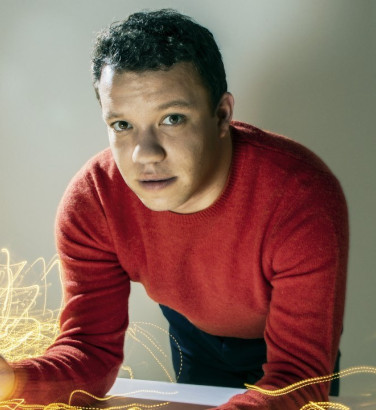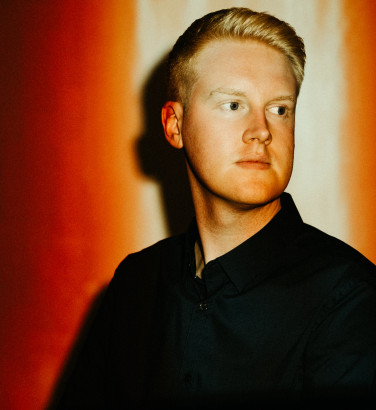
Rachel Podger: "I'm especially fond of the Polonaise in the First Brandenburg Concerto"
9 Dec 2024
News Story
Photo credit: Theresa Pewal
We're thrilled to be welcoming Rachel Podger to the SCO for our first Season concerts of 2025, centred around Bach's Brandenburg Concertos. A leading light in performing Baroque repertoire, her enthusiasm for the music of this period is such that we were delighted when she agreed to an interview by way of introduction to these performances.
Welcome to the SCO, Rachel! How does your experience of modern orchestras compare with period instrument ensembles when it comes to performing Baroque repertoire?
Playing with modern orchestras versus period instrument ensembles: it actually does completely depend on the band and the musicians! With modern bands it does make a huge difference if the players have been ‘exposed to’ HP (historical performance) and understand basic HP principles like musical gestures and rules for articulation and harmonic rhythm etc. but all of these rules are also inherent in the music, and makes sense to any good musician. It becomes exciting when you can move beyond any decisions and HP principles and have a musical conversation, ie make music - that what’s it’s all about at any rate - and that can be completely wonderful with both types of bands. I guess it depend on whether I’m convincing and the players are open minded and game!
The programme for your SCO concerts in January includes a Telemann sonata alongside lots of Bach. How does it fit in?
This piece by Telemann provides a contrast to the complex, virtuosic and utterly engaging Brandenburg Concertos Nos 1 and 4 by Bach. Not that Telemann is any less engaging, especially in the energetic dance movements of this sonata. But here there is a chance to feel a different space between the harmonies, especially in this more subdued key of E minor. Telemann wrote a hugely prolific amount of instrumental music, and on listening to this sonata you know you’re in the hands of a composer whose immersion in the musical language of different national styles of the time, with all its varied gestures and forms it has to offer, is utterly compelling. From imitation of musical figures between the parts to energetic fugal and dance movements, Telemann really knows how to write for wind instruments as well as strings. (A highly regarded composer during his life time, in fact more then JS Bach, Telemann is known to have played violin, cello, harpsichord and organ as well as wind instruments, and was an accomplished singer).
There is also a personal connection between Telemann and Bach; they were not just friends, but Telemann was the godfather to CPE Bach, the most well known composer of JS’ sons.
The Air from Bach’s Orchestral Suite No. 3 has been popular ever since August Wilhelmj recast it as Air on the G string in 1871. Is this fame warranted?
Well of course! This air is of the utmost beauty, and its popularity and fame is completely justified. It has the most fabulous musical proportions and structure, the harmonies are delicious, pulling at the heart-strings with gorgeous suspensions, and the most fabulous rhythmically simple and mesmerising bass line.
Moving on to the Brandenburg Concertos, what makes them so special from your own perspective, as a musician?
The Brandenburg Concertos are a unique set of 6 concertos with specific and unusual combinations of solo instruments in addition to a ripieno of four string parts and continuo in Concertos Nos 1, 2 and 4. ‘Six Concerts avec plusieurs Instruments’ reads Bach’s title page, dedicated to the Margrave of Brandenburg-Schwedt. Bach often uses combinations of instruments that would not deem easily reconciled - acoustically for instance - in the Second Concerto where the soloists include a trumpet and a recorder, the loudest and the softest baroque instruments respectively! Concerto No 4, which we’re including in our programme, offers two recorders (or flutes, as will be the case in our concerts) and a violin as the solo instruments. The recorders represent the good shepherd and give a pastoral flavour. They appear as a double act, sometimes in unison, sometimes duetting, in conversation with and sometimes opposed to the violin part, which is among the most virtuosic of Bach’s and is thrilling to play! Many roles are represented in this solo part, sometimes providing the bass line to the soaring recorder lines and suspensions, and dominating the proceedings as a fully fledged concerto presence.
The Third Concerto is an uplifting and joyful piece, and probably one of the most popular of the Brandenburg Concertos with string players, as each player gets to shine and say their ‘bit’. Busy and energetic figurations and patterns dialogue and flourish between each string group as well as amongst their own set of three players. With the constant presence of the number 3 in its conception and score (the scoring has 3 groups of 3, so 9 parts: 3 violins, 3 violas, 3 cellos and continuo), it is believed to represent the Holy Trinity or possibly the nine muses in Greek mythology. As with much of his music, Bach reused the first movement of this concerto for a church cantata first performed in Leipzig in 1729: Ich liebe den Höchsten von ganzem Gemüte (BWV 174), adding horns, oboes and bassoon. The scope of sound is entirely different with this scoring and gives the piece a sense of space and contrast, and this is the movement we’re including in our concerts.
The First Brandenburg Concerto begins the programme with its inventive scoring of piccolo violin (a smaller instrument tuned a third higher than a regular violin and therefore with a brighter sound), 2 horns (representing the hunt, a beloved sport of the dedicatee, the Margrave), 3 oboes (often used to depict pain and sorrow, especially audible in the heart wrenching Adagio), bassoon, strings and basso continuo. The music is again very energetic, with Bach using the Italian ritornello form to engage the listener. I’m especially fond of the Polonaise which appears as part of the last movement - the piccolo violin is ‘tacit’ here, listening to the subdued dancing of the strings in ‘piano’ before everyone returns to the tutti ‘chorus’, the courtly Menuet dance, to conclude this unusual ending to a concerto.
The Brandenburg Concertos' popularity with audiences can leave other Baroque concertos in the same vein decidedly overlooked. For anyone wanting to look into these, are there any you would particularly recommend seeking out?
Yes, there definitely is plenty of other fabulous baroque music to be listened to! Hundreds of concertos (Vivaldi wrote over 500 alone!!) are waiting to be heard and enjoyed…musicians back then were often composers, some were published, others not, and a lot of their autographs and manuscripts have been recovered and exist in libraries, however many more remain to be found! Every now and then a gem pops up somewhere in the back of a dusty score that has not seen the light of day for centuries. There are beautiful concertos and sonatas by Telemann for instance, whose output was huge and prolific. Some of his best writing I think is in his collection called ‘Tafelmusik’ which contains overtures, sonatas and concertos for various combinations of instruments.
In terms of Baroque violin concertos, they exist in the hundreds! Tartini (and Vivaldi of course as already mentioned) wrote the most beautiful violin concertos (Tartini wrote around 200) with gorgeous cantabile tunes and engaging, diverting fast movements, Leclair’s violin concertos are technically demanding and utterly stunning, and there are so many more violin-composers like Locatelli, Nardini and Porpora, to mention just a few and some who concentrated on sonatas like Corelli (he was crucial to its development), Veracini and Geminiani, Castrucci and Somis, Senaille and Guillemain and a female violin prodigy and composer called Maddalena Lombardini Sirmen who was a student of Tartini. That should keep you going!
Related Stories
![]()
The Great Grumpy Gaboon: a chat with Jay Capperauld and Corrina Campbell
30 December 2024
What is a Gaboon, and why is it grumpy? We chatted to the creators of our new Family Festival to find out ...![]()
Ryan Bancroft: "a conversation with the leader of a Finnish orchestra changed how I heard Sibelius"
30 September 2024
We speak to conductor Ryan Bancroft about music from (his not quite native) Scotland and Scandinavia.![Against a red background, a man in a dark jacket and shirt looks out of frame. His face is illuminated by a light from above.]()
Soundbox: an interview with Jay Capperauld
13 May 2024
We spoke to SCO Associate Composer Jay Capperauld about his work mentoring the three music creators featured in our UN:TITLED concerts.


